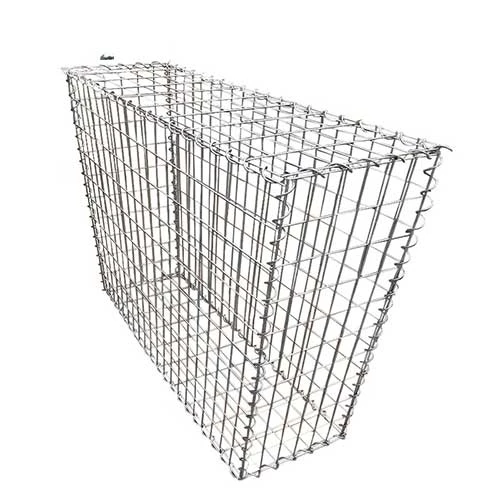-
 Phone:
Phone: -
 Email:
Email:

rockfall protection netting
Rockfall Protection Netting A Comprehensive Solution for Slope Stability
Rockfalls represent a significant hazard in mountainous regions and can cause catastrophic damage to infrastructure, threaten human life, and disrupt natural ecosystems. As urban development extends into these rugged landscapes, the need for effective mitigation measures becomes more pressing. One such solution is rockfall protection netting, a critical tool in maintaining slope stability and safeguarding both people and property.
Understanding Rockfall Hazards
Before delving into the mechanisms of rockfall protection netting, it is essential to grasp the nature of rockfall hazards. Rockfalls occur when fragments of rock detach from slopes, typically due to weathering, freeze-thaw cycles, or seismic activity. These falling rocks can range in size from small pebbles to massive boulders and can reach high velocities upon descent, making them exceptionally dangerous. Areas prone to rockfalls, such as highway cuttings or mountainous regions, require careful assessment and intervention to minimize risks.
The Need for Rockfall Protection
The consequences of rockfalls can be severe. In addition to loss of life and injury, rockfalls can lead to extensive economic losses by damaging roads, railways, buildings, and agricultural land. Consequently, various protective measures have been developed over the years, with rockfall protection netting emerging as a highly effective solution. The key to preventing rockfalls lies in a combination of engineering strategies that incorporate geological assessments, existing terrain characteristics, and appropriate materials.
Rockfall Protection Netting The Basics
Rockfall protection netting is a systematic approach to stabilizing potentially unstable rock faces. It typically consists of steel wire mesh or more advanced synthetic materials designed to capture and contain falling rocks. These nets can be anchored to the rock face using steel cables or rods, providing a secure barrier that prevents rocks from detaching or rolling onto roads, infrastructure, or populated areas.
There are different types of rockfall protection netting systems, each tailored to specific geological and environmental conditions. Flexible netting systems, for instance, are adapted to catch smaller rocks and are beneficial in areas with gentle slopes. Conversely, rigid systems are used for steeper environments and are engineered to withstand greater force.
Advantages of Rockfall Protection Netting
rockfall protection netting

The implementation of rockfall protection netting offers numerous advantages
1. Safety The primary benefit is the significant enhancement of safety for individuals traveling through or living near high-risk areas. By capturing falling rocks, these netting systems reduce the likelihood of accidents and fatalities.
2. Cost-Effectiveness Compared to other stabilization measures such as rock blasting or grading, netting systems are often more economical. They require less maintenance and are less disruptive to the landscape during installation.
3. Environmental Protection Rockfall netting minimizes the environmental impact of rockfalls on local ecosystems. By preventing debris flow, these systems protect vegetation and wildlife habitats, contributing to sustainable development.
4. Versatile Applications Rockfall protection netting can be employed in various settings, from highways and railways to sports facilities and scenic viewpoints. Its versatility makes it a popular choice for infrastructure projects worldwide.
Challenges and Considerations
Despite its advantages, effective installation of rockfall protection netting is not without challenges. A thorough geological assessment is critical to determine the appropriate type of netting and anchor systems needed for specific steep slopes. Additionally, harsh weather conditions and repeated geological movements can compromise netting over time, necessitating regular inspections and maintenance.
Moreover, while rockfall protection netting is an effective short-term solution, it should be part of a broader strategy encompassing ecological restoration and long-term geological stability.
Conclusion
Rockfall protection netting is a vital component in the management of rockfall hazards, offering a practical and cost-effective solution to safeguard lives and infrastructure. As we continue to urbanize and expand into mountainous areas, the importance of such protective measures will only grow. By investing in technologies such as rockfall protection netting, we not only enhance safety but also promote responsible development that respects both human and environmental needs. Through ongoing research, innovation, and community engagement, we can better prepare for and mitigate the risks associated with rockfalls in our ever-changing landscapes.
-
Wire Mesh for Every Need: A Practical SolutionNewsJul.25,2025
-
Steel Fences: Durable, Secure, and Stylish OptionsNewsJul.25,2025
-
Roll Top Fencing: A Smart Solution for Safety and SecurityNewsJul.25,2025
-
Cattle Farm Fencing Solutions for Maximum SecurityNewsJul.25,2025
-
Affordable Iron Binding Wire SolutionsNewsJul.25,2025
-
Affordable Galvanized Wire SolutionsNewsJul.25,2025
-
Wire Hanger Recycling IdeasNewsJul.25,2025








